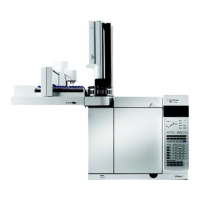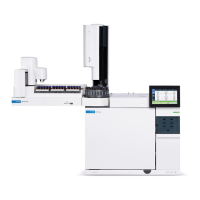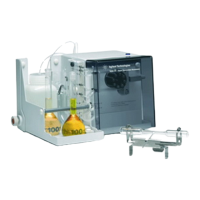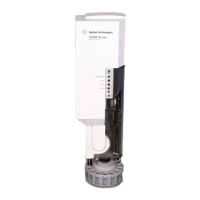Inlets 3
Advanced User Guide 27
About the Split/Splitless Inlet
This inlet is used for split, splitless, pulsed splitless, or pulsed
split analyses. You can choose the operating mode from the inlet
parameter list. The split mode is generally used for major
component analyses, while the splitless mode is used for trace
analyses. The pulsed splitless and pulsed split modes are used
for the same type of analyses as split or splitless, but allow you
to inject larger samples.
This inlet is available in both EPC (electronic pneumatics
control) and EPR (electronic pneumatics regulation) equipped
GCs.
Septum tightening (S/SL)
Septum retainer nuts must be tightened enough to obtain a good
gas seal, but not so much as to compress the septum and make it
difficult to push a syringe needle through it.
For the standard septum retainer nut, an internal spring in the
septum retainer applies pressure to the septum. For inlet
pressures up to 100 psi, tighten the retainer until the C-ring lifts
about 1 mm above the top surface. This is adequate for most
situations.
With higher inlet pressures, tighten the septum retainer until
the C-ring stops turning, indicating that the retainer is in firm
contact with the septum.
If using a Merlin Microseal™ septum, finger tighten the septum
nut, until snug (not loose). The pressure capacity depends on
the duckbill seal used.
NOTE
Pulsed split and pulsed splitless modes are not supported on EPR
(electronic pneumatics regulation) equipped GCs.
1 mm

